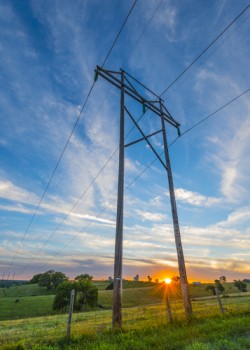I know there are a lot of you out there who have been hearing about KentuckyWired high-speed, high-capacity internet (broadband) and wondering what the big deal is. A lot of you are thinking, I have internet in my house. Doesn’t everybody? I can get WIFI at Panera. Life is good. What is KentuckyWired and why do we need it?
And secretly, in your quietest, darkest moments that you would never share with anyone, you are asking more questions. Questions like these: Isn’t all broadband the same? What exactly is a gigabit? Does the internet have wires? I thought it was a “cloud?”
There’s no shame in it.
But to understand the exciting opportunities offered by KentuckyWired and the huge advantages of building high-speed internet out to every county in the state, you have to know the answers to these types of questions. This a safe zone in which to explore these questions and more.
You’re welcome.
Now, let’s get started.
Isn’t all broadband the same?
High speed internet can be delivered in different ways. Copper phone cables, cable TV cables and satellite are popular forms of delivery, but their capacity is limited, and with an ever-growing amount of traffic and data load, the future is in fiber-optics. Fiber-optic broadband, like that used in KentuckyWired, is delivered over impossibly thin glass cables and is by far the fastest, most reliable medium, rapidly replacing coaxial and copper cables.
What is a gigabit? And what do they mean by bandwidth?
If you studied your mathematical prefixes in middle school, you’ll surmise that a gigabit is 1 billion bits, a bit being the smallest piece of information in computing (a 1 or a 0). The higher the bandwidth of a network, the more bits it can transfer in any given moment. Fiber-optic networks are being designed to deliver one gigabit of information per second (1 Gbps), with 2 gigabit and even 10 gigabit networks on deck. To give you an example of these rates of speed, a 1 Gbps environment could download Die Hard in about 16 seconds. At that rate, in five years’ time the word buffering could join the endangered words list with terms like dungarees and durst.
Does the internet have wires? Isn’t it all up there in “cyberspace?” Or is it called “the cloud” now?
Okay, so this is a biggie. Terminology like “cyberspace” and “the cloud” would have us thinking that all of our banking information, Facebook updates and YouTube videos are floating around in little bits of information over our heads, like in the original Willy Wonka movie. But it’s not like that. The internet does have wires (in fact right now about 285 undersea fiber cables act like the internet’s central nervous system, tying the digital world together). That hardware infrastructure is vital to the functionality that we all enjoy.
“The cloud” refers to the ability to save information on a network of computers somewhere outside of your home and then access that info from any device that has internet access. Instead of saving a document locally (on your own hard drive) you are saving that document in the cloud. You feel like you can just reach out magically and pull that budget report from the abyss, but it’s really being saved on a boring old hard drive on somebody else’s computer. And, yeah, nobody says “cyberspace” anymore except maybe your grandma.
What’s so important about KentuckyWired?
KentuckyWired and other networks like it seek to bring the optimal fiber-optic broadband experience to every home and business, readying its residents and workers for a future that will require more bandwidth and expand opportunities on countless levels. Think of the job opportunities, tele-healthcare possibilities and technological leaps and bounds that this could facilitate.
When complete, KentuckyWired will provide a central nervous system of its own for the state– over 3,400 miles of fiber-optic infrastructure dubbed the “middle-mile.” Partners like Solarity are helping communities to strategically plan for how they can plug into to that digital backbone. And now that you know a bit or two more of information about it, maybe you’ll want to plug in, too.
Read more about KentuckyWired HERE. Read more about what communities need to do to get started HERE.
About the author
Christy Swift has been a freelance writer and correspondent in the United States and Canada for over 10 years. With a degree in English and technical writing, she has a knack for making complicated subject matter digestible and even tasty. Christy regularly conducts research into the latest trends in project management to provide the Solarity Group with engaging content for its website and e-newsletters.
About Solarity >
We partner with organizations and individuals to help them go “from inspiration to implementation” by helping them to define the right work, plan the work, and work the plan.
